Introduction
The modern customer journey has become increasingly complex. The idea of a neat “funnel” that a buyer follows has devolved into multiple touchpoints, research, recommendations, and consideration. Additionally, today’s consumers move seamlessly between platforms, engaging with social media, streaming content on Connected TV (CTV), and browsing websites on their tablets, often within a short span of time. This behavior presents a significant challenge for advertisers: how to deliver a consistent, efficient, and engaging message across a fragmented digital landscape.
When campaigns operate in isolation with separate budgets, tools, and reporting for each channel, the overall strategy becomes disjointed. This siloed approach often results in inefficient spending, duplicated efforts, and an inconsistent customer experience.
Strategic cross-channel campaign management provides the solution. By unifying programmatic advertising efforts across all digital touchpoints, from mobile display to streaming audio, brands can transform individual interactions into a cohesive and data-driven narrative. The result is improved efficiency, greater engagement, and a measurable increase in return on investment (ROI).
At Version2, we believe every brand and agency should have access to the same advanced advertising technology as large enterprises, without unnecessary cost or complexity. The ORION platform was built to make that possible. It provides a single access point to enterprise-level tools that allow you to plan, execute, and measure cross-channel campaigns with precision and efficiency.
This article examines the key pillars of a successful cross-channel strategy and explains how aligning media planning and buying with customer journey optimization can drive measurable, real-world results.
The Fragmentation Problem and the Cost of Silos
The biggest impediment to successful digital advertising today isn’t a lack of channels; it’s the lack of communication between them.
Agencies and brands often manage their digital spend through a patchwork of platforms, leading to what we call organizational and data silos:
- Inefficient Spend: Within an hour, a consumer sees the same retargeting ad on Instagram three times, then another on a website display banner, and finally a pre-roll ad on CTV. This aggressive, repetitive exposure is not only annoying but expensive. Your budgets are competing against each other instead of complementing your message, causing ad fatigue and even negative sentiment towards the product or service.
- Inconsistent Messaging: Without unified planning, the message the customer receives during the “Awareness” stage on video may not logically progress to the “Consideration” message they see in a display ad. This lack of narrative consistency undermines brand trust.
- Limited Access to Technology: Many agencies are forced to use only one or two demand-side platforms (DSPs) due to minimum spend requirements or prohibitive integration costs. This limits their access to the full inventory marketplace and restricts their ability to optimize campaigns across the web.
The ideal goal for modern marketers is a fully integrated system where real-time data guides every investment decision across all channels. This is the power of effective cross-channel campaign management.
Building Blocks of a Unified Cross-Channel Strategy
Successful cross-channel campaign management rests on three foundational elements that transform disjointed campaigns into a streamlined customer experience.
Unified Data and Audience Creation
Data powers programmatic advertising, yet it delivers real value only when it is unified and put into action. Fragmented or siloed data can limit visibility, create inefficiencies, and prevent advertisers from understanding the complete customer journey.
- Real-Time Analysis is Mandatory: Optimizing a cross-channel campaign requires real-time analysis of audience behavior across every device. For example, if a user views your CTV ad but later abandons their cart on mobile, the next interaction should reflect that context and intent. The ORION platform enables this level of precision by delivering unified analytics and a comprehensive view of performance across all channels.
- Audience Creation with AI-Driven Technology: Modern campaign planning goes far beyond basic demographics. Real success comes from deeper insights, and this is where AI truly adds value. The ORION campaign planner uses artificial intelligence to uncover high-performing audience segments and identify behavioral and intent-based signals that drive stronger conversions. This approach helps you connect with the right people, not just the right profiles.
Seamless Media Planning and Buying
Accurate media planning and buying in a cross-channel environment is about resource allocation, not just purchasing impressions. It requires a system that can instantaneously shift budgets to the highest-performing channels.
- The Power of Multi-DSP Campaign Management: The advertising world is driven by DSPs, each offering specialized inventory, pricing, and targeting capabilities. Limiting yourself to one platform limits your market access.Version2 solves this by providing multi-DSP access through the ORION platform. This all-in-one software gives agencies, brands, and media buyers access to everything they need to create, launch, and analyze multiple campaigns across the top 6 market-leading DSPs, with no integration work and minimum spend. Having access to such a wide inventory marketplace is key to expanding your reach and achieving more efficient bids.
- ROAS-Driven Budget Allocation: Instead of setting fixed channel budgets at the start (e.g., $10k for video, $5k for display), a cross-channel approach uses AI-powered media buying to dynamically reallocate funds toward the channels currently driving the highest return on ad spend (ROAS).
Consistent Creative and Messaging
Customers should experience your brand as a single, cohesive voice, not as a series of separate interactions across different channels. This level of consistency comes from using sequential messaging that adapts to each customer’s stage in the purchase journey.
- Sequential Messaging: If a customer watched 75% of your awareness-level Connected TV ad, the following ad they see (perhaps a digital video ad or a performance display retargeting banner) should transition the conversation to product features or a promotional offer. The message evolves to match the customer’s stage.
Actionable Steps for Customer Journey Optimization
To execute effective cross-channel campaign management, you must first map the customer journey and define the role of each programmatic advertising channel. Note that each person doesn’t follow this journey exactly, but rather spends various amounts of time in various stages. Also, this provides a framework for creating messaging by assigning a goal to each type of content or creative.
Mapping the Programmatic Journey
| Customer Stage | Goal for the Advertiser | Key Programmatic Channels |
| Awareness (Top of Funnel) | Broad reach, building recognition. | Connected TV (CTV), High-impact Digital Out-of-Home, Streaming Audio. |
| Consideration
(Mid-Funnel) |
Driving engagement, educating the customer. | Digital Video, Social Mirroring (leveraging social media), Native Display, In-Banner Video. |
| Conversion
(Bottom of Funnel) |
Driving immediate
action (purchase, sign-up, download). |
Performance Display retargeting, Adhesive Ads, Programmatic Direct Mail, In-Email Display. |
Customer journey optimization means creating seamless transitions between and back and forth from each stage, guided by real-time data and customer insights.
The Role of Automation in Strategy
Some believe automation replaces strategic thinking, but that is a misunderstanding. In reality, automated ad campaign management strengthens human strategy by managing the repetitive, real-time adjustments required in today’s dynamic programmatic landscape.
Automation empowers skilled media buyers to focus on what truly matters: defining audiences, shaping narratives, and setting strategic goals. Meanwhile, the ORION platform handles tactical execution, including bidding, optimization, budget pacing, and performance tracking. This collaboration between AI-driven technology and human expertise delivers stronger, more efficient campaign outcomes.
How the ORION Platform Solves the Cross-Channel Challenge
The key distinction between the ORION platform and other ad tech solutions is its integrated architecture, purpose-built for agencies and brands that require enterprise-level power without unnecessary complexity.
What Makes the ORION Platform Different from Other Ad Tools?
Most ad platforms focus on a single function, whether it is one DSP, one channel such as social, or one reporting capability. The ORION platform brings everything together in one unified dashboard, giving you complete visibility and control across every channel.
- Proper Multi-DSP Access: Unlike platforms that merely integrate with one or two partners, ORION gives you access to multiple market-leading demand side platforms. This eliminates the need to manage separate contracts, logins, and billing systems for your programmatic advertising partners. This is the definition of streamlined multi-DSP campaign management.
- A Unified Analytics Dashboard: The primary pain point for cross-channel marketers is reconciling data. ORION provides real-time ad performance tracking across all active campaigns and all DSPs in one place. This makes it simple for an agency to run multiple client accounts from one dashboard, providing comprehensive reporting.
- Actionable Metrics Focus: In a landscape overflowing with data, our focus is on the metrics that truly matter. While standard measures such as impressions and clicks are still tracked, ORION emphasizes key performance indicators (KPIs) like viewability, completion rate, and, most importantly, the true cost per action (CPA) across channels. These are the metrics that form the foundation of return on ad spend (ROAS) optimization.
- Flexible Service Model: Version2 is built for maximum flexibility. For teams that prefer full control, the self-service programmatic platform offers all the tools needed to manage campaigns independently. For those who want expert support or faster execution, our media-buying specialists provide strategic guidance and fully managed service solutions.
By centralizing tools, data, and campaign management, the ORION platform provides a comprehensive programmatic advertising solution for agencies. It enables a shift from fragmented, channel-specific management to intelligent, cross-channel optimization that drives greater efficiency and stronger client results.
Conclusion
Effective cross-channel campaign management is a business necessity. It ensures efficient media planning and buying, consistent messaging, and a strong brand presence at every stage of the customer journey. The future of digital advertising is about mastering the connections between the many channels that exist, and understanding where and how much time your audience spends there.
If you are struggling with fragmented data, limited access to advanced programmatic tools, or duplicated efforts across platforms, centralization is the solution. You need a platform that unites the capabilities of multiple demand-side systems into one simple and transparent hub.
Stop managing campaigns in isolation. Start orchestrating a connected, data-driven customer experience.
Ready to unify your programmatic advertising and achieve measurable ROI? Discover the ORION Platform and Get Started Today
FAQs
What is the difference between multi-channel and cross-channel campaign management?
Multi-channel means using multiple channels (display, social) independently, often with siloed goals and data. Cross-channel campaign management means integrating these channels so they work together strategically, with consistent messaging and shared data, ensuring that a user’s interaction on one channel informs their experience on the next. This unified approach is key to customer journey optimization.
How does the ORION platform help with multi-DSP management?
The ORION platform is a centralized software interface connecting multiple market-leading demand-side platforms (DSPs). This means you can run, manage, and analyze campaigns across all these top-tier platforms from one dashboard, eliminating the need for separate contracts and data reconciliation tools.
Is the ORION platform suitable for smaller brands or only large enterprises?
The ORION platform is specifically designed to democratize advanced ad tech. It provides access to enterprise-level technology and multi-DSP campaign management features typically reserved for large companies, but without the high minimum spend requirements. It is an excellent software programmatic advertising for agencies or brands looking to scale intelligently.
Does Version2 offer support, or is it a self-service programmatic tool?
Version2 offers both. If your team has in-house expertise, you can use the ORION platform as a fully self-service programmatic solution. If you prefer hands-on support, our managed service option allows our media-buying experts to handle campaign planning, execution, and optimization while providing strategic guidance every step of the way.









